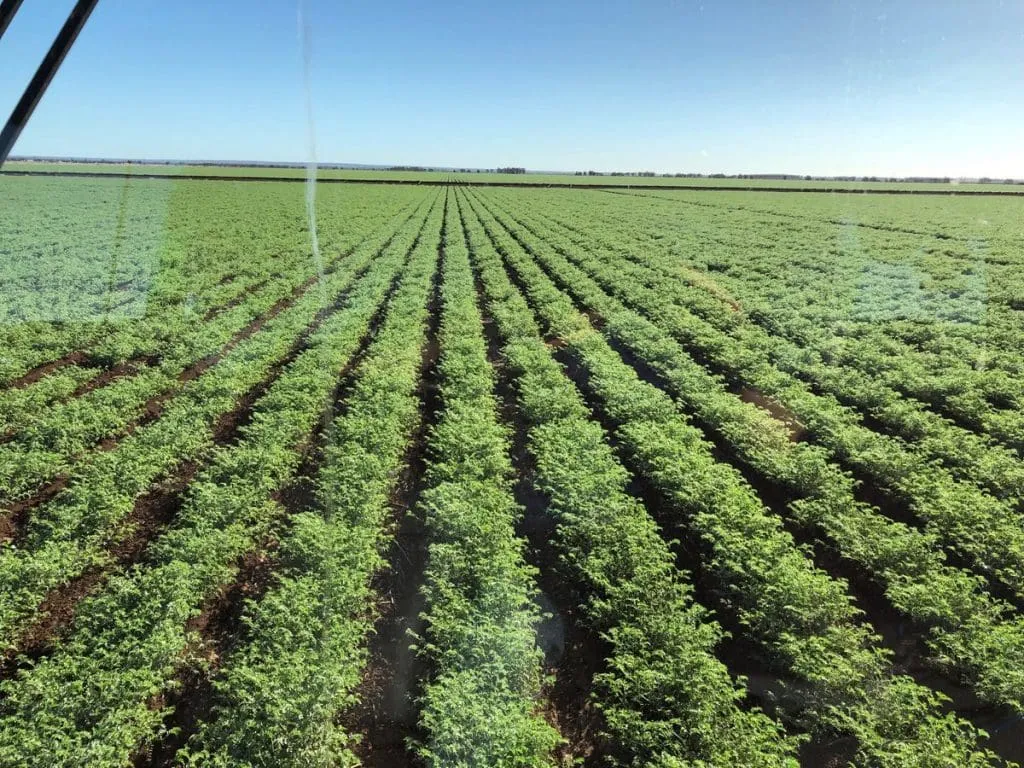In the face of escalating water scarcity and climate change, farmers are in dire need of climate-smart strategies to maintain crop yields and ensure food security. A recent study published in ‘Труды по прикладной ботанике, генетике и селекции’ sheds light on the intricate relationship between nitrogen fertilization and irrigation regimes on the yield of Kabuli chickpeas, offering promising insights for the agriculture sector.
The study, led by H. H. B. Al-Allo from the University of Maragheh, investigated the effects of varying nitrogen doses (0, 20, and 40 kg ha–1) and irrigation regimes on chickpea phenology, morphology, and yield in the drought-prone regions of Kermanshah, Western Iran. The irrigation regimes included well-watered, rainfed, and supplemental irrigation during flowering and seed setting.
The findings revealed that while nitrogen application slightly delayed phenological stages, soil moisture deficiency significantly accelerated flowering and maturity. “The lack of soil moisture increased the longitudinal root growth, with the highest rooting depth recorded for the rainfed condition with the highest nitrogen dose,” Al-Allo noted.
The study also highlighted the impact of supplemental irrigation on grain yield components. Although supplemental irrigation improved yield compared to rainfed conditions, the difference between supplemental irrigation and well-watered conditions was still evident. The highest amounts of vegetative growth and yield were recorded under well-watered conditions with nitrogen doses of 20 and 40 kg ha–1.
One of the most significant findings was the water-use efficiency for grain yield (WUEG) under rainfed conditions, which was 41%, 17%, and 24% higher than well-watered, supplemental irrigation during flowering, and supplemental irrigation during flowering and seed setting, respectively. The highest biomass-based water use efficiency (WUEB) was obtained under well-watered conditions with a nitrogen dose of 40 kg ha–1 and rainfed conditions with nitrogen doses of 0 or 20 kg ha–1.
The study concludes that while supplemental irrigation during flowering and seed setting with a nitrogen application of 20 or 40 kg ha–1 produced a lower grain yield than well-watered conditions, it is still recommended for small-scale farmers in semi-arid regions as an efficient smart-agriculture practice.
The implications of this research are substantial for the agriculture sector, particularly in drought-prone areas. By optimizing nitrogen fertilization and irrigation strategies, farmers can enhance water-use efficiency, improve crop yields, and adapt to the challenges posed by climate change. As Al-Allo puts it, “This study provides a foundation for developing climate-smart agriculture practices that can help farmers mitigate the impacts of water scarcity and ensure sustainable food production.”
The findings of this study could pave the way for future research into the effects of nitrogen fertilization and irrigation strategies on other crops, as well as the development of precision agriculture technologies that can optimize water and nutrient use. By embracing these innovations, the agriculture sector can move towards a more sustainable and resilient future.

